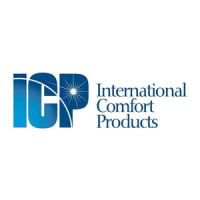
Do you have a question about the ICP NAC248AKA1 and is the answer not in the manual?
| Category | Air Conditioner |
|---|---|
| Seasonal Energy Efficiency Ratio (SEER) | 16 |
| Refrigerant | R410A |
| Model | NAC248AKA1 |
| Heating Seasonal Performance Factor (HSPF) | 9.0 |
| Power Supply | 208-230V/60Hz/1Ph |
| Cooling Capacity | 24000 BTU/h |
| Heating Capacity | 24000 BTU/h |
Essential safety rules to follow during installation and operation of the unit.
Guidelines for selecting an appropriate and safe location for the outdoor unit.
Specifies required minimum distances around the unit for proper operation and servicing.
Details methods and materials for properly supporting the outdoor unit.
Recommendations for supporting units placed on the ground.
Guidelines for installing units on rooftops, including structural considerations.
Importance of using approved system components for compatibility and performance.
Information on the restrictor orifice and its role in system performance.
Proper types of tubing and handling for refrigerant line installations.
Specific guidance for installations where the condenser is elevated above the evaporator.
Recommended procedures and safety precautions for brazing refrigerant lines.
Step-by-step guide for properly evacuating the system using a vacuum pump.
Instructions on how to operate and secure service valves on the unit.
Instructions for safe and correct electrical connections to the unit.
Requirements for properly grounding the unit for safety and code compliance.
Details on making line voltage and low voltage connections.
How to safely access the unit's control box for wiring or adjustments.
Overview of the heat pump's control box and its components.
Diagram showing typical low voltage wiring for A/C systems.
Diagram illustrating low voltage control wiring for heat pump systems.
Guidance on adjusting refrigerant charge for optimal system performance.
Importance of establishing correct airflow for system adjustments and performance.
Procedure for checking and adjusting refrigerant charge using the superheat method.
Procedure for checking refrigerant charge in heating mode for optimal performance.
Explanation of the electronic defrost system and its operational parameters.
How to adjust the defrost cycle frequency for heat pump operation.
Instructions for maintaining the condensate drain to ensure proper drainage.
Tips for keeping the outdoor unit clean for better efficiency and longevity.
General conditions, limitations, and coverage provided under the product warranty.
Specific warranty terms and exclusions applicable to residential installations.
